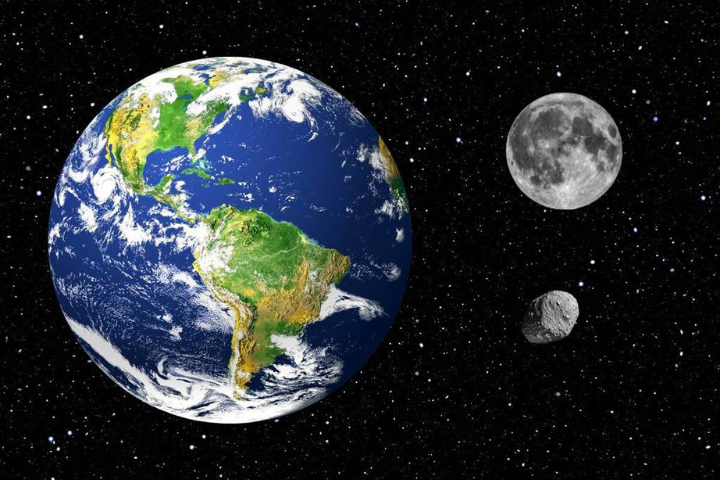In an exciting astronomical occurrence, Earth is set to acquire a “second moon” this fall. An asteroid passing near our planet will be attracted by its gravitational pull. This “second moon” will temporarily enter Earth’s orbit on September 29 and will stay for almost two months.
Asteroid 2024 PT5: Insights on Its Origin and Trajectory
First detected by NASA’s Asteroid Terrestrial-Impact Last Alert System (ATLAS) on August 7, asteroid 2024 PT5 originates from the Arjuna asteroid belt, which contains various asteroids within our solar system. These asteroids can occasionally come within 2.8 million miles (4.5 million km) of Earth.
Scientists studying the trajectory of asteroids have found that one traveling at a slower speed of approximately 2,200 mph (3,540 km/h) can be captured by Earth’s gravitational field and temporarily enter an orbit, much like 2024 PT5. This research was published in the Research Notes of the American Astronomical Society.
According to astronomer Dr. Jennifer Millard said in an interview with BBC, the asteroid will enter Earth’s orbit on September 29 and is anticipated to exit on November 25.
“It’s not going to complete a full revolution of our planet, it’s just going to kind of have its orbit altered, just twisted slightly by our own planet and then it’ll continue on its merry way,” she stated.
How To View It?
The asteroid measures only about 10 meters (32 feet) in length and is composed of dull rock, making it invisible to the naked eye. It will also be challenging to detect using binoculars or home telescopes, as it is significantly smaller than the moon, which has a diameter of approximately 3,474 kilometers.
“Professional telescopes, they’ll be able to pick it up. So you’ll be able to look out for lots of wonderful pictures online of this little dot kind of moving past the stars at great speed,” Dr Millard noted, who is also the host of the Awesome Astronomy podcast.
The ideal way to view the “mini-moon” would be to visit a space observatory that offers public access.
Other asteroids have previously been observed entering Earth’s orbit, although many may have gone unnoticed. This particular asteroid is expected to return to Earth’s orbit again in 2055.





GIPHY App Key not set. Please check settings